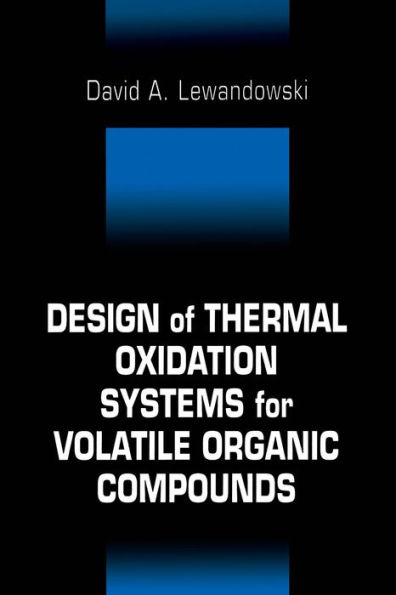Controlling the emission of volatile organic compounds (VOC) became a very prominent environmental issue with the passage of the 1990 Clean Air Act Amendments, and will continue to be an environmental priority through the next decade. No single technology has played as important a role in the control of VOC emissions as thermal oxidation. It has the ability to destroy VOCs in a one-step process that produces innocuous by-products.
Design of Thermal Oxidation Systems for Volatile Organic Compounds provides all the information needed for developing a thermal oxidation design in a single reference. It covers design, operation, and maintenance as well as the principles behind the classification of volatile organic compounds as hazardous waste. The author explores the primary purpose of thermal oxidizers and discusses their limitations.
The book provides:
With the new regulations that affect VOC emissions, engineers from such diverse fields as oil refining, chemical distillation and separation processes, and pharmaceutical industries will need to design and implement thermal oxidation systems. Design of Thermal Oxidation Systems for Volatile Organic Compounds provides a reference to the entire design process, from conceptualization to operation and maintenance.
Controlling the emission of volatile organic compounds (VOC) became a very prominent environmental issue with the passage of the 1990 Clean Air Act Amendments, and will continue to be an environmental priority through the next decade. No single technology has played as important a role in the control of VOC emissions as thermal oxidation. It has the ability to destroy VOCs in a one-step process that produces innocuous by-products.
Design of Thermal Oxidation Systems for Volatile Organic Compounds provides all the information needed for developing a thermal oxidation design in a single reference. It covers design, operation, and maintenance as well as the principles behind the classification of volatile organic compounds as hazardous waste. The author explores the primary purpose of thermal oxidizers and discusses their limitations.
The book provides:
With the new regulations that affect VOC emissions, engineers from such diverse fields as oil refining, chemical distillation and separation processes, and pharmaceutical industries will need to design and implement thermal oxidation systems. Design of Thermal Oxidation Systems for Volatile Organic Compounds provides a reference to the entire design process, from conceptualization to operation and maintenance.

Design of Thermal Oxidation Systems for Volatile Organic Compounds
368
Design of Thermal Oxidation Systems for Volatile Organic Compounds
368Related collections and offers

Product Details
| ISBN-13: | 9781351455718 |
|---|---|
| Publisher: | CRC Press |
| Publication date: | 12/14/2017 |
| Sold by: | Barnes & Noble |
| Format: | eBook |
| Pages: | 368 |
| File size: | 30 MB |
| Note: | This product may take a few minutes to download. |
